Oh, we all know how much fun playdough can be! See below pictures of some of your past creations.
It reminds me of the great times we spent together at Strongstart.




But what are the benefits of playing with playdough?
• Played with someone provides for quality time together, that builds strong secure bond/attachment. When an activity is creative and fun, your child will naturally mirror your enthusiasm and follow along.
• can make a fantastic learning aid for children
• helps in sensory development
• can be a therapeutic tool for stress and anxiety relief
1. Maximize love,Manage stress |
Kneading, rolling, flattening and punching the playdough provide the chance to relieve stress and reduce feelings of anxiety and worry, which can lead to children feeling frustrated and acting out because of these feelings. You can try adding scented aromatherapy oils to the play dough, such as vanilla, lavender or rose oil, it can have a relaxing and calming effect when inhaled.
Creating with playdough lets children feel competent (“I’m good at rolling the dough”) and proud of their accomplishments (“Hey, I made a spiky dinosaur!”). It builds self-esteem.
How can playdough help us process our feelings? Listen to the song Here. |
2. Talk, sing and point |
Communication Skills & General Knowledge
Playdough can be a fantastic tool for facilitating learning, from teaching
A lot of children learn better by actually doing things with their hands, which is why playdough can be such a great learning tool. Whether you are teaching them about animals, food, or math, playdough can act as a fantastic resource and an amazing learning aid.
• Talking with children about what they are doing while playing with playdough helps build communication skills. • Children practice listening to and talking with friends, siblings and adults. • Materials like playdough help children build their vocabulary as they explain what they are doing. Children learn how to take turns, ask for tools that they need or certain play-dough colours, as well as how to share it. Plan a Birthday Celebration: make a birthday cake! You can plan a whole birthday party with them: Whose birthday is it? Who will be invited to the party? Where will the party take place, and what songs will be sung? Allow your child to choose the color and ‘flavor’ of the cake, and to decorate it accordingly with playdough stars, sparkles and other designs. When the cake is ready, you can have them cut straws into smaller candles and allow them to place the ‘candles’ on the cake.
|
3. Read and discuss stories |
Language & Cognitive Development
• Children use language to invent stories about their playdough creations. You may notice your child using facts or ideas from books you’ve read together, like these one below representing “Dear Zoo” and “Old MacDonald had a farm”
Listen to Dear Zoo story Here
Listen to Teacher Maria singing “Old MacDonald had a farm” Here. Also you can check the read-along “Old MacDonald” story Here. Playdough for Literacy: For older kids, you can let them roll the playdough into thin strips and then have them create letters with their fingers; they can spell their name, or the names of their best friends or pets; or they can form any of their favorite words or letters. This exercise provides a double bonus in allowing your child to increase their finger dexterity and bilateral coordination, as well as giving them some fun spelling and reading practice.
|
4. Explore through movement and play |
Physical Health & Well-Being
• Playing with playdough, molding and rolling builds fine motor skills. • Helps to gain control over hand and arm movements which improves coordination, like eye-hand coordination and use of both hands for specific tasks.
What are Fine Motor Skills? • Fine motor skills are the ability to use the smaller muscles of the body, like those in the hands, fingers, thumbs and wrists. • Fine motor skill development is a very important part of a child’s physical development. • Children need to learn to use their hands competently in order to manipulate toys and to acquire self-help skills such as feeding and dressing. • Children use their fine motor skills when writing, turning pages, holding small items, buttoning clothing, cutting with scissors, and eating.
Go on a Treasure Hunt: Bury objects in the playdough and then ask your child to dig them out using their fingers. You can make an exciting treasure quest out this game; and your kids’ fingers will get an excellent work out! Afterward, if you’ve hidden shells, beads or other small decorative objects in the playdough, your child can string them together to make a necklace. This will provide additional coordination benefits, enhancing your child’s ability to use both hands simultaneously.
|
5. Count, group and compare |
Let’s make playdough now! It’s a great opportunity to talk about measurements. Be careful with the boiling water.
Homemade Playdough recipe Materials Needed: 2 cups all-purpose flour 1/2 cup table salt 2 tablespoons cream of tartar 2 tablespoons vegetable oil 1.1/4 cups boiling water food colouring (optional)
Directions: 1. Mix the flour, salt, cream of tartar and oil in a large mixing bowl 2. Add food colouring TO the boiling water then into the dry ingredients 3. Stir continuously until it becomes a sticky, combined dough 4. Take it out of the bowl and knead it vigorously for a couple of minutes until all of the stickiness is gone. 5. Place in an airtight container when not in use. If you don’t remember seeing me make playdough at Strongstart take a look Here. Come count with me Here.
Have fun playing with it with your child!
|
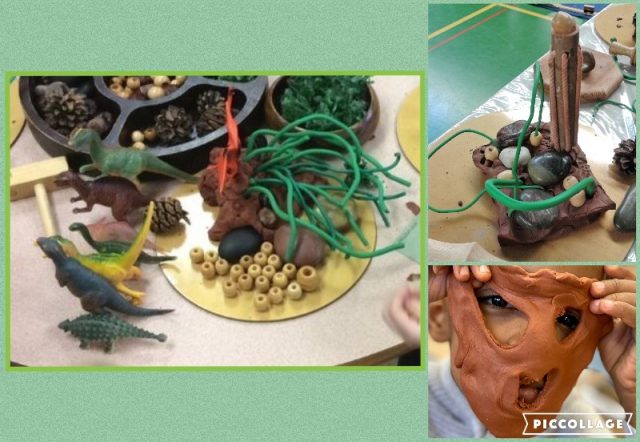
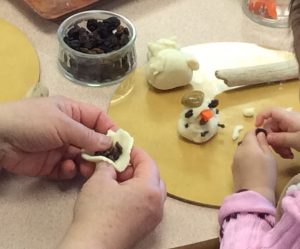 shapes and numbers to colour and smells. By talking as you use playdough, explaining what you are doing with the dough and why, you provide the opportunity to children to copy your actions. Often, seeing something in action and hearing the process explained helps to learn effectively.
shapes and numbers to colour and smells. By talking as you use playdough, explaining what you are doing with the dough and why, you provide the opportunity to children to copy your actions. Often, seeing something in action and hearing the process explained helps to learn effectively.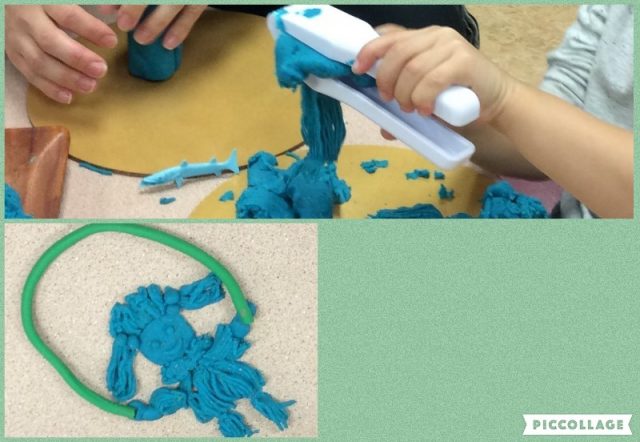
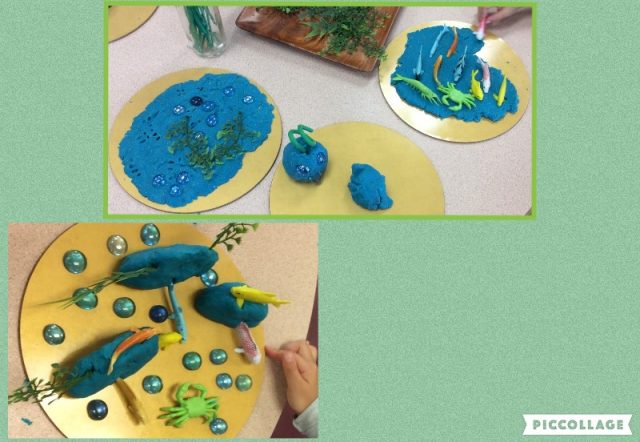
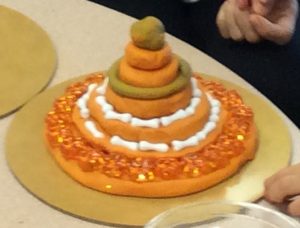
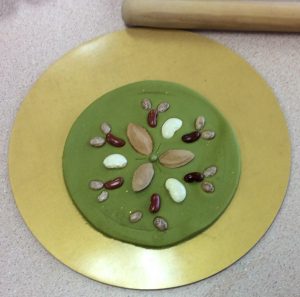 Don’t forget to sing ‘Happy Birthday’ at the end of it and blow out the candles. Have your child pull the candles out and put the playdough away.
Don’t forget to sing ‘Happy Birthday’ at the end of it and blow out the candles. Have your child pull the candles out and put the playdough away.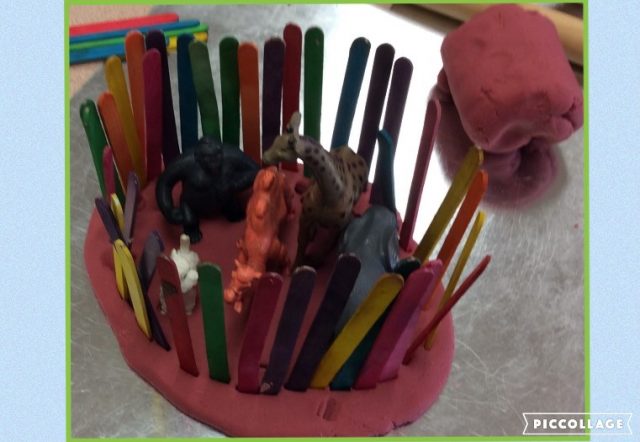
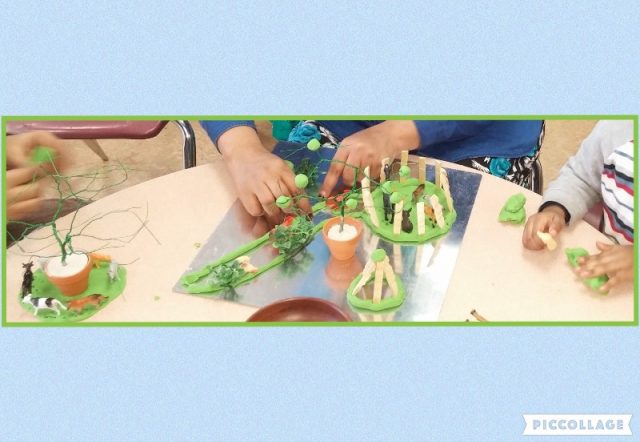
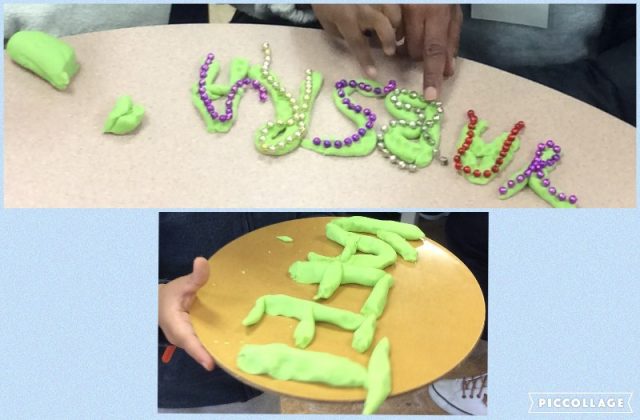
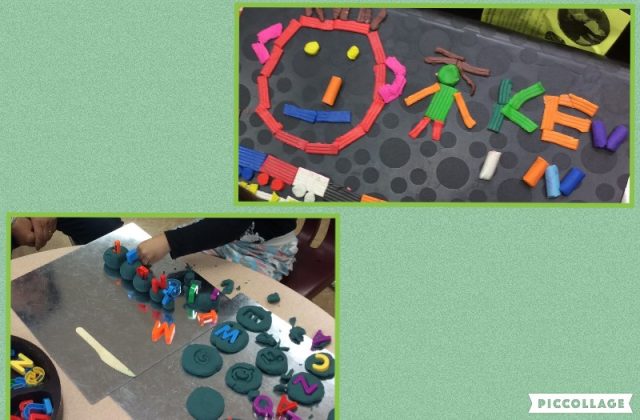
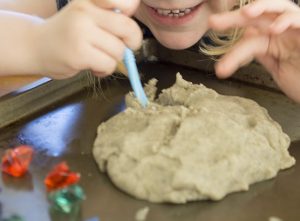
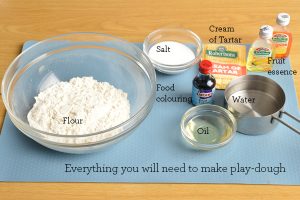
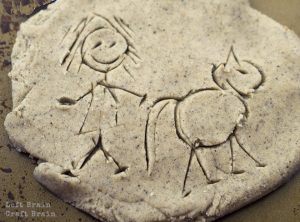

Leave a Reply